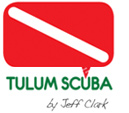yalku lagoon: 20-50ft. situated directly in front of yalku lagoon, this shallow dive site is the most famous feeding site around, due to its constant flow of nutrients in and out of the lagoon. its water is brackish (mixed fresh and salt water).
you can see many small daytime predators like gobies, blennies, wrasse and goatfish.
under the extensive and climbing elkhorn coral structures, there are various tunnels to swim through.
morgan: 40ft. this dive site is akumal’s best place to spot hawksbill, green, and loggerhead sea turtles. you can simply follow the reef, or enjoy coral and sponges below you and have turtles around you on the whole dive. local massive porites corals often host brightly colored spiral tube worms and hermit crabs. there are quite a few anemones and clownfish doing their ritualistic “dance” with anemone tentacles. truly an enjoyable place to dive.
lobster: 40-50 ft. the dive site is like a little coral island in the middle of a sandy plateau, home for many baby lobsters and shellfish. this is the typical fringing reef that supports an abundant mixture of sponges and octocorals that grow from the hard coral base of the reef.
can be combined as a nice drift dive with another dive site las redes.
half moon: 40-45ft. the dive site is a patch reef with sandy area between coral cracks. it is characterised by the diversity of shapes and colors with some beautiful hemispherical colonies of montastrea corals. you can admire all kind of herbivorous coral reef fishes like parrotfish, surgeonfish or damselfish. out in the featureless sand you can spot well concealed stingrays and hunting trunkfish in safety by day expanses far from the reef.
las redes: 40-60ft. this site was named by the original explorers of the akumal reef for the giant commercial fishing net that was found blanketing it. the net has now been removed but the marine life still thrives. las redes is known for its abundant marine life, schooling fish, barracudas, stingrays, lobsters and if you’re lucky, turtles.
motorcycle reef: 50-60ft. at the shallow end of this dive site lying in the sand there is a 15 year old, coral covered motorcycle where you can always find schools of feeding fish, arrow crabs and southern rays. this reef is laced with a large variety of soft corals, which makes it a good spot to see feeding turtles. green morays can be spotted in coral holes along with many barracudas, needlefish, and trumpetfish on the shallower part of the reef.
horseshoe reef: 60-80ft. the horseshoe shaped reef is full of branching corals hosting day time hunters like triggerfish, filefish, trunkfish and puffers. many crustaceans and beautiful caribbean lobsters are also common to see. It’s a perfect site for an underwater naturalist dive.
this is the best site to see southern stingrays buried in the sand, often leaving only their eyes and tail visible. be careful because the barb on their tail is serrated and covered in a venomous mucous, used for self defense and you barely see them hidden beneath the sand.
gorgonians: 60-80 ft. this site offers lots of beautiful different genus of gorgonians and sponges. all of them grow on hard substrate and gorgonians form extensive fans that are all positioned at right angles to the current so they can filter plankton-bearing water. beautiful coral harmonies can be disturb by sudden pursuing predators like jacks which are running down their little prey.
gonzalo’s reef: 60-80 ft. this site is decorated by large, vivid reef fingers. you are almost guaranteed to see hawksbill, green and loggerhead turtles here feeding, playing and checking out the visiting divers.
xaak: 60-90 ft. this dive site is a very special deep dive. reef fingers reach up to 30 feet from the sea floor. turtles, nurse sharks, rays and a bright spectrum of fishes are common sightings here.
